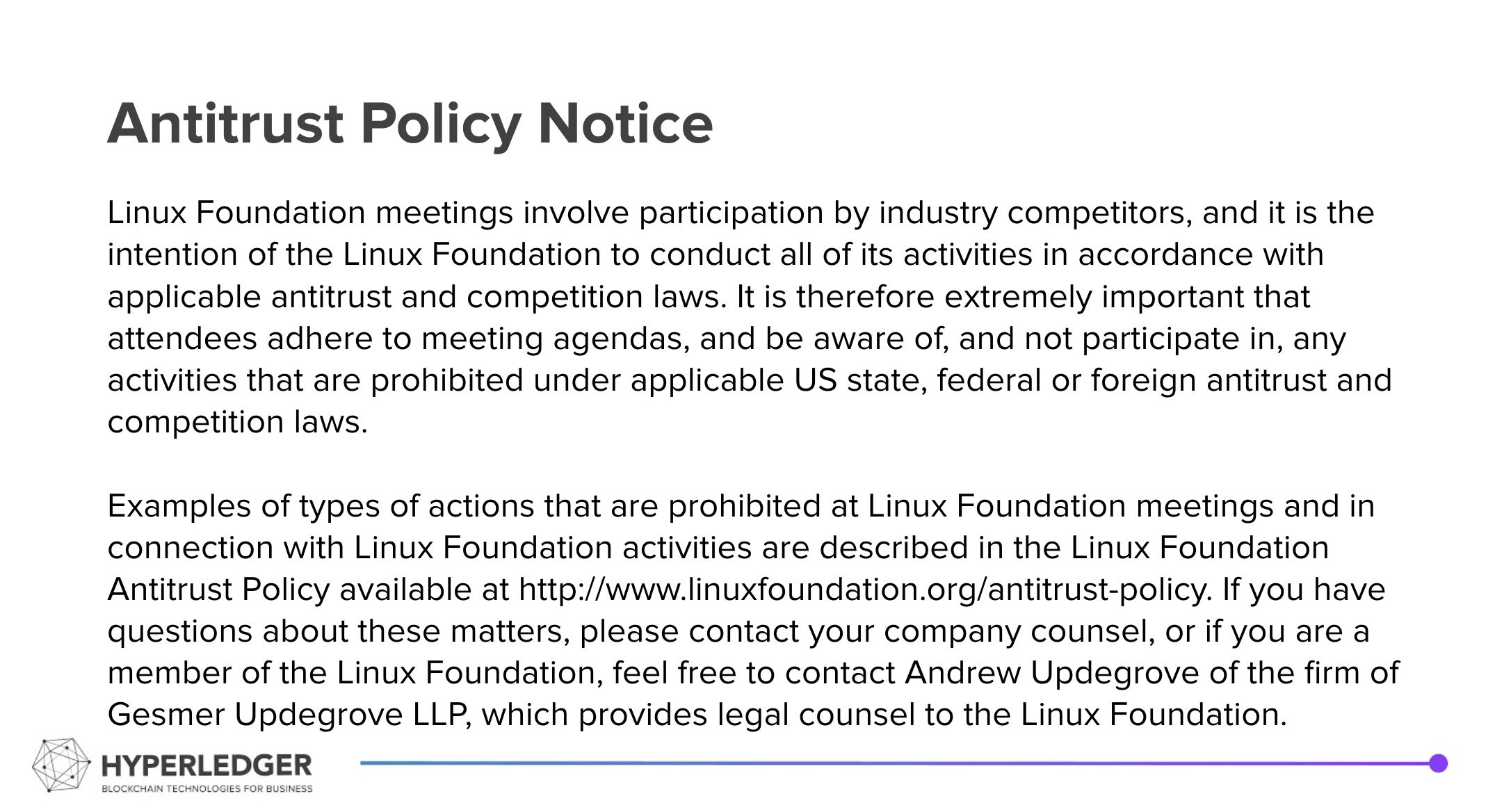Summary
- Presentation Data Models
- Predicate Types
- Open Discussion
Recording of Call:
Notices:
This specification creating group operates under the Linux Foundation Community Specification License v1.0.
Hyperledger is committed to creating a safe and welcoming community for all. For more information please visit the Hyperledger Code of Conduct. |
|---|
Meeting Attendees
Stephen Curran (BC Gov / Cloud Compass Computing Inc.) <swcurran@cloudcompass.ca>
Related Repositories:
- Mike Lodder's proposed Data Models: https://hackmd.io/ZlsnLoclSveePJOZljgMfA
- AnonCreds v2.0 Specification Repository: https://github.com/hyperledger/anoncreds-spec-v2/
- AnonCreds v1.0 Specification: https://hyperledger.github.io/anoncreds-spec/
- AnonCreds Methods Registry: https://hyperledger.github.io/anoncreds-methods-registry
- AnonCreds Rust Open Source Code: https://github.com/hyperledger/anoncreds-rs
Goals of the Working Group:
The goal of AnonCreds v2.0 is to retain and extend the privacy-preserving features of AnonCreds v1.0, while improving capabilities, performance, extensibility, and security.
Meeting Preliminaries:
- Welcome and Introductions
- Announcements:
- 2023.05.15 (this Thursday): Presentation: ZKPs – the High School Math Edition - Stephen Curran at the Identity SIG Meeting
- Updates to the Agenda?
Agenda
- Proposed Presentation Data Models, based on what Mike Lodder has presented and documented here: https://hackmd.io/ZlsnLoclSveePJOZljgMfA
- Review of Predicates
- For each – what Schema Claim Types can/must be used?
- Hide signature – proof of signature (unlinkable)
- Hide attribute - reveal or hide - Schnorr Proof
- Set memberships, such as
- Zip/postal Code
- State
- City
- Accumulator
- Commitment - same value
- Range Proof
- Verifiable Encryption
- Commitment
- Not discussed: Claim equality across credentials (e.g. proof that the claims in two credentials are the same without sharing the value)
- Schema Claim Type:
- Would it make sense defining date related schema claim types that are especially useful to use in ZKP predicates?
- "iso860_date" – encodes to dateint e.g., 2023.06.26 is 20230626
- "iso860_datetime" - encodes to Unix Time e.g., seconds since Jan 1, 1970
- Would it make sense defining date related schema claim types that are especially useful to use in ZKP predicates?
Future Calls
- Collect some use case specific examples and continue the discussions:
- Applying the data structures to a real use case or two
- What concrete uses other than link-secret is there for blinded data in a credential?

